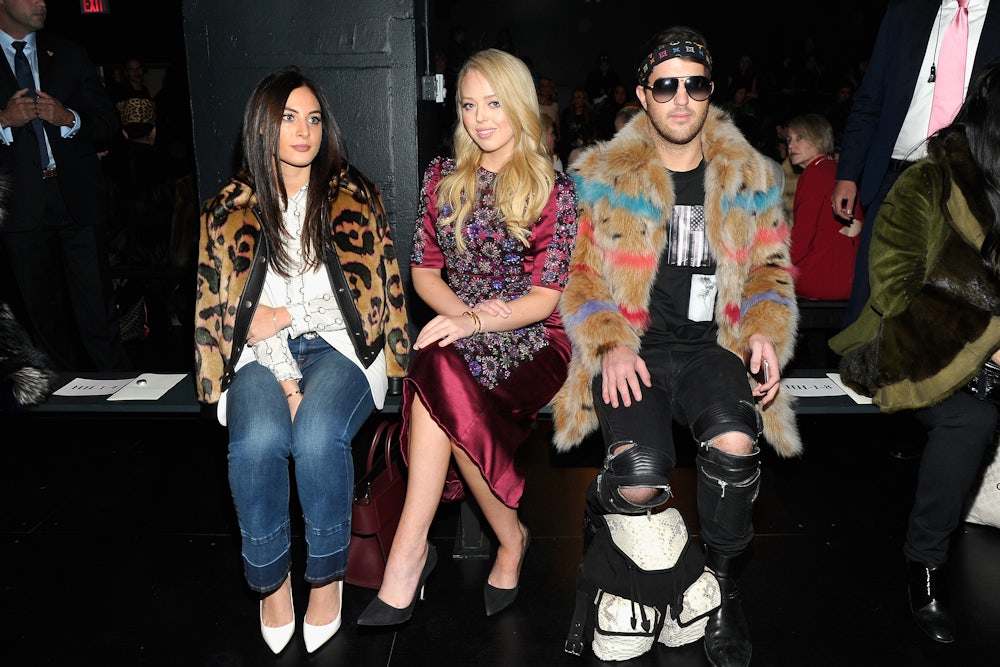“Take care of the luxuries,” said Dorothy Parker, “and the necessities will take care of themselves.” That’s the ethos that guided the rich in 2022 as the stock market tumbled and the rest of us fretted about inflation. Indeed, to the limited extent that inflation remains a problem, at this point a principal driver may be luxury spending by champagne-swilling plutocrats.
We know quite a lot about the luxury market because it’s tracked closely by consulting firms like McKinsey and Boston Consulting Group, by accounting firms like Deloitte and KPMG, by The New York Times and The Wall Street Journal, by the business schools, and by something in New York City called the Luxury Institute (whose inscrutable slogan is “the expertise of emotionally intelligent luxury”). Still, the luxury consumption industrial complex can on occasion be thrown for a loop.
A report posted January 17 by the consulting firm Bain & Co. said the luxury market “surprised everyone in 2022” by growing 19–21 percent last year, even as the rest of us were struggling to cut back expenses by the 6.5 percent that the consumer price index grew during the 12 months that preceded December. Writing in the Financial Times, Rana Foroohar noted that luxury spending rose in 2022 to roughly the same extent (20 percent) that the stock market fell.
That isn’t what usually happens in times of financial turmoil. Luxury brands took a serious hit during the 2008 subprime mortgage crisis; jewelry sales, for instance, in 2009 dipped 12 percent worldwide. Today, though, “the luxury market … appears better equipped to cope with economic turbulence, thanks to a consumer base that is both larger and more concentrated on top customers who are less sensitive to downturns.” Rich luxury consumers have grown wealthier and more numerous than they were just one decade ago. As Paul Newman and Robert Redford ask repeatedly about the posse pursuing them in Butch Cassidy and the Sundance Kid: Who are those guys?
I would venture to guess that no small proportion are members of America’s inherited-wealth aristocracy. Defined, for instance, as the 27 U.S. families that made both the Forbes 400 in 1983 and the Forbes Billion-Dollar Dynasties list in 2020, this group saw its net worth grow more than 1,000 percent over three decades, according to a report led by Chuck Collins of the Institute for Policy Studies. The fact that Forbes even has a Billion-Dollar Dynasties list (the first was in 2015), consisting of 50 families worth $7.3 billion or more, tells you a lot about the changing face of American wealth, from entrepreneurial first-generation fortunes (still dominant) to descendants’ inherited fortunes (gaining fast). As I’ve written elsewhere (“Defund the Dead,” December 2021), public policy has conspired these past few decades to shelter family wealth from taxation and transparency, lending capital accumulation every conceivable advantage in its age-old race against successor-generation dissipation (what Henry Allen, formerly of The Washington Post, used to call WASP rot, though it isn’t particularly WASPy anymore).
What makes me suspect young inheritors of vast wealth as the main perpetrators of endlessly rising luxury spending? For starters, the United States played an outsize role in this growth in the luxury market in 2022, sidelining China (usually a formidable luxury consumer, but impeded last year by Covid lockdowns). For another, the Bain report attributes the 2022 growth to millennials (ages 27–42) and Gen Z (ages 7–26). The Bain report further projects that Gen Z and Gen Alpha (ages 0–6) will over the next seven years conspire to spend three times faster than any other generations, “making up a third of the market.” These people are too young, most of them, to have gotten rich on their own. Many of them are too young even to buy a six-pack of beer. But they have, as Bain puts it delicately, “a more precocious attitude toward luxury, with Gen Z consumers starting to buy luxury items some three to five years earlier than millennials did (at 15 vs. at 18–20).” We’re talking about trust-fund brats.
What do these little twerps like? Luxury cars, expensive resorts, fancy wines, yachts, destination dining (though not enough, apparently, to save Copenhagen’s antler-festooned Noma), pricey furniture, fine art, and nonfungible tokens, or NFTs, which I’m still a little hazy what they even are.
If I’m right that the driving force behind the inflationary luxury consumption wave is trust-fund brats, it’s kind of puzzling that they should be so impervious to a 20 percent drop in stock prices, given that their livelihood is asset-based. Maybe they just get better investment advice than the rest of us. Or maybe they have so goddamned much money that the market has to drop more than 20 percent to attract their attention.
Whatever the reason, they’ve changed expectations in the financial world. “We believe that many investors think that U.S. luxury demand is highly correlated to stock market performance,” the Bank of America advised its customers last spring, but it just ain’t so. Between 2010 and 2020, B of A said, the correlation was less than 30 percent. “OK, so the market is down,” Milton Pedraza, chief executive of the Luxury Institute, told Foroohar. “Maybe if I have a family office, the checks I send out in a given month will be for $80,000 instead of $100,000.”
(What’s a family office, you ask? You poor peasant. A family office is an office set up to shelter family fortunes from taxation and distribute some portion of the untaxed capital gains to callow heirs.)
A July 2022 Luxury Institute white paper on “evolving values and priorities” for Ultra High Net Worth Families, or UHNWs, said these people experience a “need for security and privacy” that necessitates “protected environments” like “jets, yachts, islands.” They “require larger, more private indoor spaces” and are “once again embracing the gated community and private club model (country, yacht, and golf clubs) filled with familiar people.” They fuss a lot about their health, and “concierge 24/7 access to doctors is no longer enough.” They have a strong interest in preventive medicine and advanced biomedicine, and I think maybe what’s being suggested here is that they’re easy prey for smooth-talking quacks (though the anonymous author would surely deny it).
They “favor the familiar and trusted brands … the most.” But I gather from Dana Thomas’s 2007 book Deluxe: How Luxury Lost Its Luster that this may not be a wise policy because a lot of the classic luxury brands (I’m not going to risk a lawsuit by naming them) have been sold and resold and are now produced cheaply and crappily, surviving only on snob appeal. I myself am the proud owner of a luxury-brand stove because the previous purchasers of my house bought one, and its very expensive parts break pretty much constantly. I’ve learned from repair persons that the brand is notorious for preying upon the rich and stupid.
The big question is whether these trust-fund brats will continue to spend and spend and spend to such a degree that the Federal Reserve will have to keep interest rates high enough to cause a serious recession. Recessions are still, I think, bad for rich people, even trust-fund brats, and deep recessions are even worse. So kids, can you lay off the Louis Vuitton and the Burberry and the Rolexes for just a little while? You’re screwing with the soft landing we’re all rooting for. When inflation’s licked, I promise you can go back to spending down your trust funds as fast as you possibly can.






